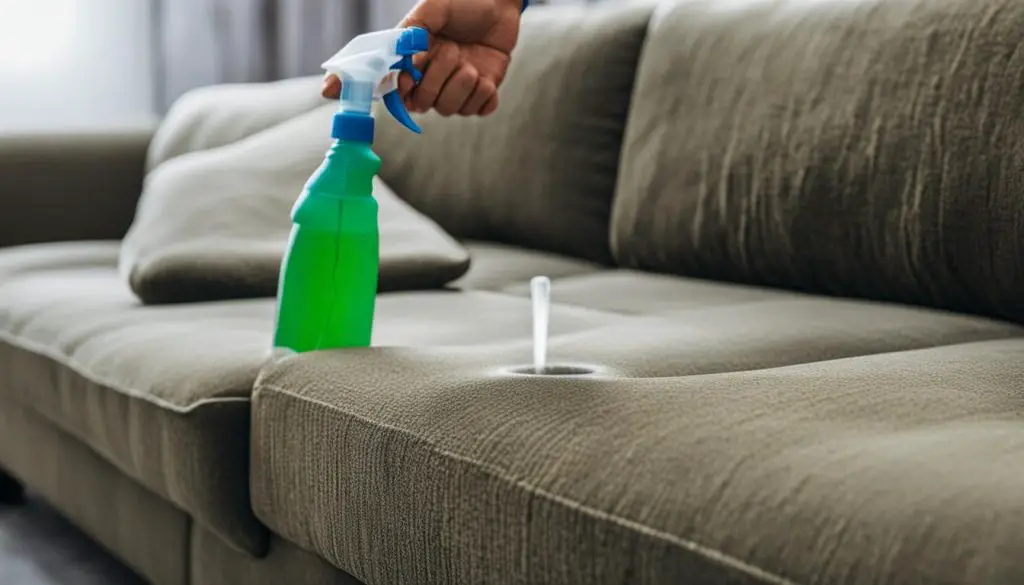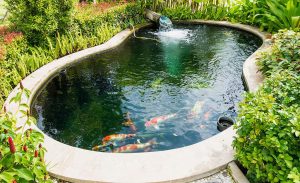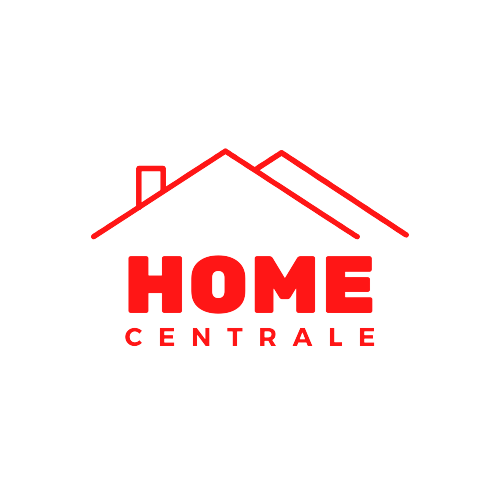Mold, just like roaches and bedbugs can be a common problem in homes, especially when it comes to fabric furniture. It’s important to know how to remove mold from fabric furniture effectively and safely — without relying on bleach. Using bleach-free methods is not only better for the environment but also helps to maintain the integrity and lifespan of your cherished home furniture. In this article, we’ll explore natural and non-toxic solutions for mold removal from fabric furniture.
Key Takeaways:
- Removing mold from fabric furniture without bleach is possible and safer for your health and the environment.
- White vinegar and hydrogen peroxide are effective natural solutions for killing mold on fabric.
- Baking soda and lemon juice can also be used as non-toxic alternatives for mold removal.
- Protective gear should be worn during mold cleanup to minimize exposure.
- Preventing mold growth requires maintaining proper ventilation, reducing moisture, and promptly addressing water leaks or spills.
Why Avoid Toxic Cleaning Solutions?
.
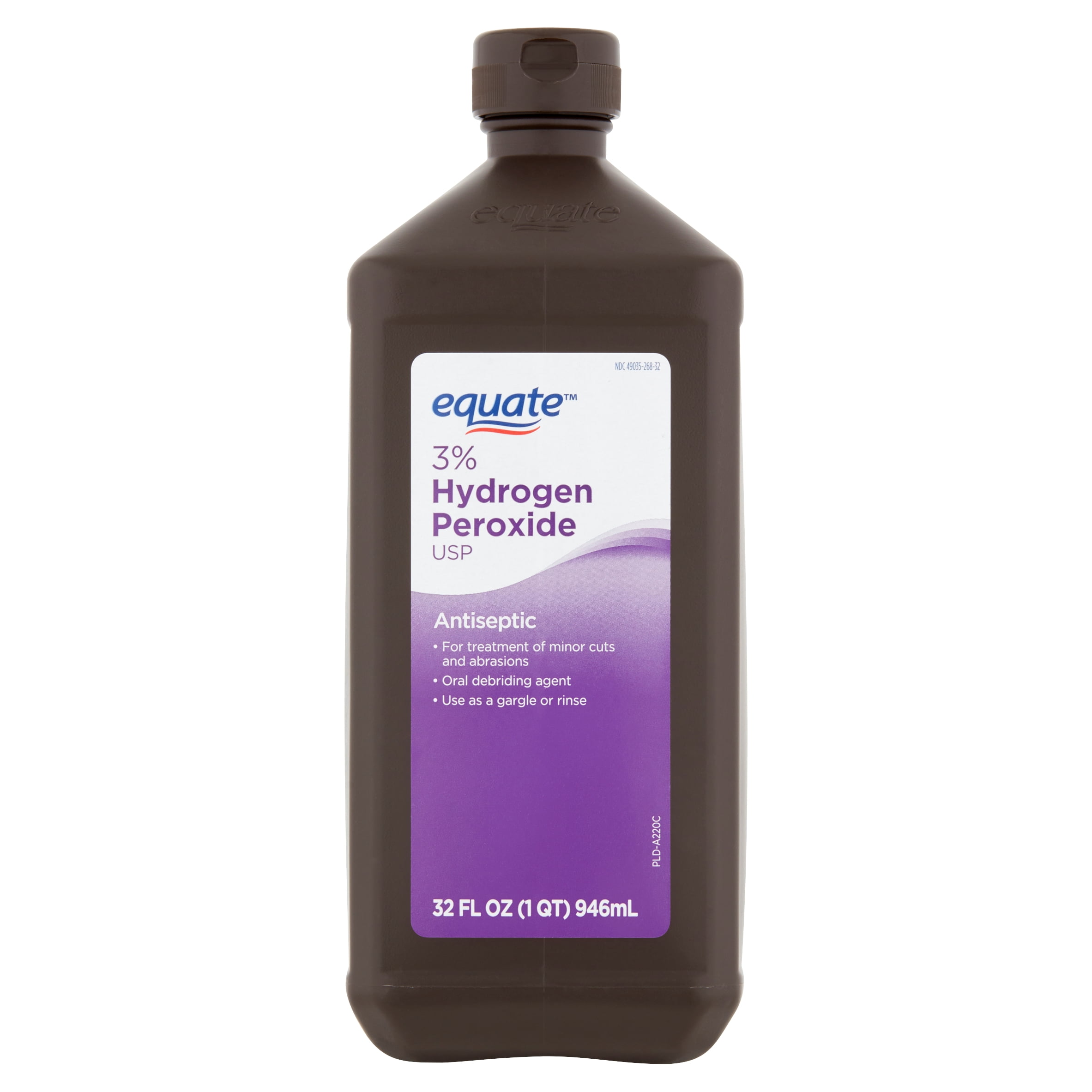
For mold removal, it’s essential to prioritize the safety of your family and the environment. Many traditional cleaning solutions contain toxic chemicals that can have harmful effects on both. These chemicals can lead to respiratory issues, skin irritation, and other health problems. Additionally, they can contribute to environmental pollution, further impacting the planet we call home.
To ensure a safe and eco-friendly mold removal process, it’s important to steer clear of toxic cleaning solutions. Instead, opt for non-toxic alternatives that can effectively eliminate mold without compromising your health or the well-being of the environment. Natural cleaners such as vinegar, baking soda, hydrogen peroxide, lemon juice, tea tree oil, and grapefruit seed extract are excellent choices that offer powerful cleaning properties without the use of harmful chemicals.
| Non-Toxic Mold Removal Solutions | Benefits |
|---|---|
| Vinegar | Kills mold and removes stains |
| Baking Soda | Neutralizes odors and absorbs moisture |
| Hydrogen Peroxide | Breaks down mold stains |
| Lemon Juice | Natural antifungal and antibacterial properties |
| Tea Tree Oil | Powerful fungicidal properties |
| Grapefruit Seed Extract | Antifungal and antimicrobial properties |
Embracing eco-friendly mold removal practices not only ensures a cleaner and healthier living environment but also contributes to a sustainable future.
Helpful Tools for Mold Cleanup
Having the right tools can make all the difference. Whether you’re tackling a small area or a larger project, having the appropriate equipment and supplies is essential. Here are some helpful tools for effective mold removal:
- Mold cleanup tools: Brushes are useful for scrubbing away mold from surfaces, while spray bottles help in applying cleaning solutions evenly. Measuring cups ensure accurate proportions when mixing solutions, and towels come in handy for wiping down surfaces.
- Mold removal equipment: For larger areas, consider using plastic sheets or drop cloths to isolate the mold and prevent cross-contamination. A dehumidifier can be beneficial to control moisture levels in indoor spaces.
- Cleaning supplies: Utilize natural mold removal methods by choosing cleaning supplies like vinegar, baking soda, hydrogen peroxide, and rubbing alcohol to effectively remove mold without using harsh chemicals.
- Protective gear: Always prioritize your safety by wearing protective gear such as gloves, a breathing mask, and goggles. These items help minimize your exposure to mold spores and harmful cleaning solutions.
Related: How to Keep Birds off Patio Furniture
Tips for Choosing the Right Tools
When selecting mold cleanup tools, consider the size of the project and the materials being cleaned. Different tools may be required for various surfaces and levels of contamination. Additionally, it’s important to use high-quality cleaning supplies to ensure the best results. Prioritize eco-friendly options and opt for natural cleaners whenever possible.
Remember to follow instructions carefully when using cleaning solutions and equipment. If the mold infestation is extensive or poses potential health risks, it’s recommended to seek professional mold removal services.
Natural Mold Cleaning Solutions
Natural mold cleaning solutions are safe, effective, and environmentally friendly. When it comes to removing mold from fabric furniture, there are several natural options that can help. Using these natural cleaners eliminates the need for harsh chemicals while effectively eliminating mold.
Vinegar for Mold Removal
Vinegar is a powerful natural mold cleaner, especially white vinegar. Its acidic properties help kill mold and prevent it from returning. To use vinegar for mold removal, simply create a solution of equal parts vinegar and water, and apply it to the affected area. Let it sit for a few minutes, then scrub the area with a brush or cloth. Rinse thoroughly and allow the furniture to dry.
Baking Soda for Mold Removal
Baking soda is another effective natural mold cleaner. Its alkaline properties make it a natural antifungal agent. To use baking soda for mold removal, create a paste by mixing baking soda with water. Apply the paste to the moldy area and let it sit for a few hours. Then, scrub the area with a brush or cloth, rinse, and allow the furniture to dry.
Hydrogen Peroxide for Mold Removal
Hydrogen peroxide is a mild antiseptic that can also effectively remove mold from fabric furniture. To use hydrogen peroxide for mold removal, pour it into a spray bottle and spray it onto the affected area. Let it sit for 10-15 minutes, then scrub the area with a brush or cloth. Rinse thoroughly and allow the furniture to dry.
Lemon Juice for Mold Removal

Lemon juice contains natural acids that can help kill mold and remove stains from fabric furniture. To use lemon juice for mold removal, squeeze fresh lemon juice onto the moldy area and let it sit for a few minutes. Scrub the area with a brush or cloth, rinse, and allow the furniture to dry.
Tea Tree Oil for Mold Removal

Tea tree oil is a natural antifungal and antibacterial agent that can effectively remove mold from fabric furniture. Mix a teaspoon of tea tree oil with a cup of water in a spray bottle. Spray the solution onto the moldy area and let it sit for a few minutes. Scrub the area with a brush or cloth, rinse, and allow the furniture to dry.
Grapefruit Seed Extract for Mold Removal

Grapefruit seed extract is a natural antimicrobial agent that can help eliminate mold from fabric furniture. Mix 10 drops of grapefruit seed extract with a cup of water in a spray bottle. Spray the solution onto the moldy area and let it sit for a few minutes. Scrub the area with a brush or cloth, rinse, and allow the furniture to dry.
These natural mold cleaners can be used alone or in combination with each other for effective mold removal. Experiment with different solutions to find what works best for your specific mold problem.
Rubbing Alcohol and Sunlight Exposure
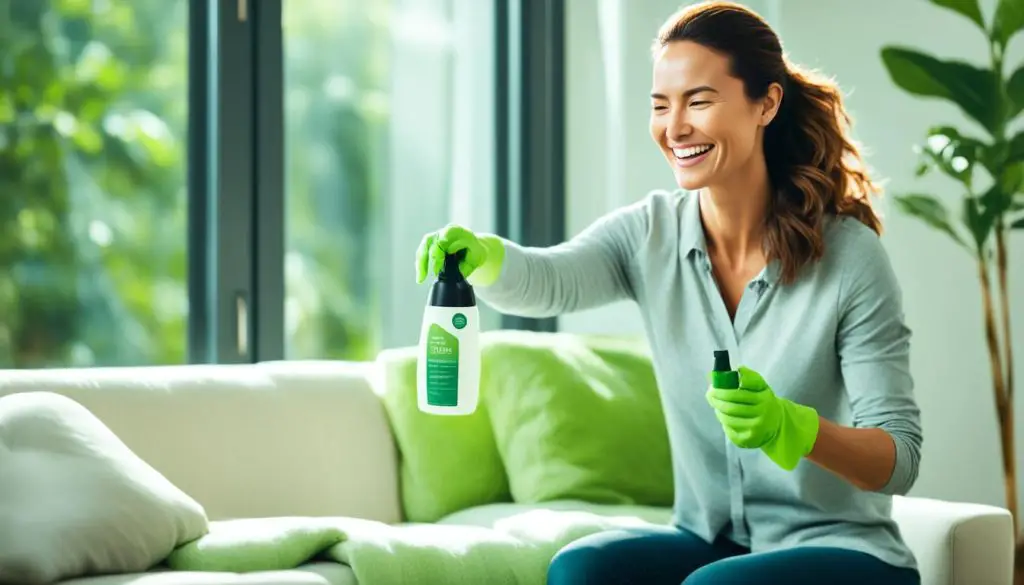
When it comes to natural mold removal methods, rubbing alcohol and sunlight exposure can be highly effective. Let’s explore how these methods can help with mold removal and prevention.
Rubbing Alcohol for Mold Removal
Rubbing alcohol, also known as isopropyl alcohol, is a powerful disinfectant that can kill mold on contact. To use rubbing alcohol for mold removal:
- Mix equal parts of water and rubbing alcohol in a spray bottle.
- Spritz the solution on the affected area.
- Wait for a few minutes to let the rubbing alcohol work its magic.
- Wipe down the area using a clean cloth or sponge.
The rubbing alcohol will not only kill the mold but also help remove any stains or discoloration caused by the mold.
Sunlight Exposure for Mold Removal
Sunlight exposure is another natural method for mold removal. Mold thrives in dark and damp environments, and sunlight can help dry out the affected area and make it difficult for mold to survive.
To utilize sunlight exposure for mold removal:
- Move the fabric furniture to an area with access to fresh air and mild sunlight.
- Open windows or doors to allow proper ventilation.
- Leave the furniture exposed to mild sunlight for several hours, ideally on a sunny day.
The combination of fresh air and sunlight will not only kill the mold but also eliminate any musty odors that might be present.
It’s important to note that while rubbing alcohol and sunlight exposure can be effective in mold removal, they are most suitable for minor mold problems. For extensive or widespread mold infestations, it’s best to seek professional mold remediation services.
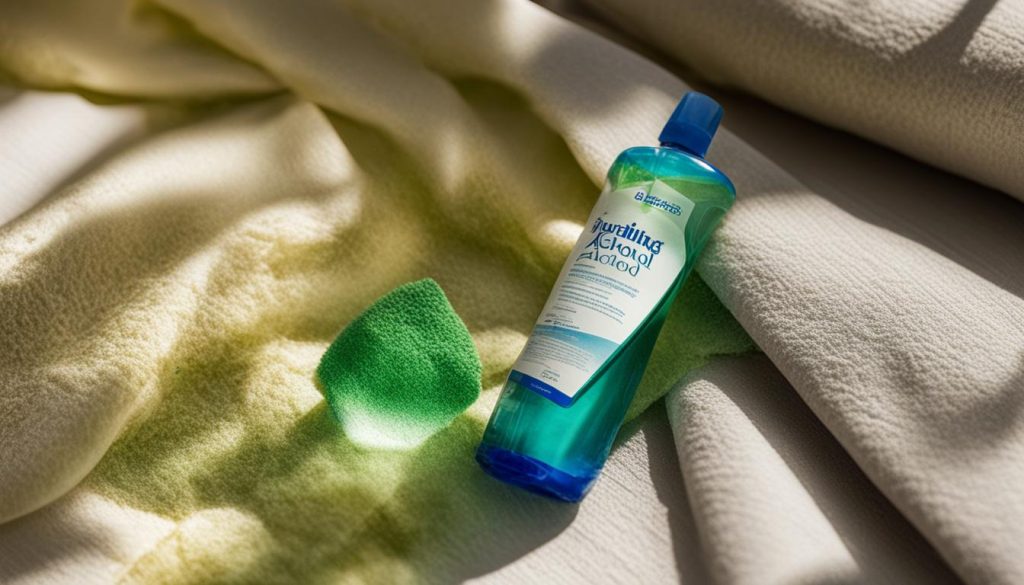
| Benefits of Rubbing Alcohol for Mold Removal | Benefits of Sunlight Exposure for Mold Removal |
|---|---|
|
|
Causes of Mold on Fabric Furniture
Mold growth on fabric furniture can be attributed to various factors, primarily stemming from a damp environment and poor ventilation. Understanding the causes will help you take proactive measures to prevent mold from infesting your cherished furniture pieces.
Damp Environment
A damp environment creates the ideal conditions for mold to thrive. Moisture from the air can seep into the fabric, providing the necessary moisture for mold spores to germinate and grow. This is particularly prevalent during rainy seasons or in areas with high humidity.
Poor Ventilation
Inadequate airflow and poor ventilation contribute to mold growth on fabric furniture. Without proper ventilation, moisture becomes trapped, creating a favorable environment for mold to proliferate. Lack of fresh air circulation and sunlight further exacerbate the problem.
Organic Material in Fabric
Organic materials present in the fabric, such as dirt, sweat, or food particles, provide additional nutrients for mold to feed on. These materials, combined with moisture, act as a catalyst for mold growth, leading to unsightly stains and potential damage to your furniture.
Prevention of Mold on Fabric Furniture
To prevent mold on fabric furniture, consider implementing the following mold prevention tips:
- Regularly inspect your furniture for any leaks or signs of water damage. Address these issues promptly to prevent moisture from seeping into the fabric.
- Wipe up spills immediately to avoid moisture absorption.
- Improve ventilation in your home by opening windows, using fans, or installing air purifiers to facilitate air circulation.
- Reduce humidity levels in your home by using dehumidifiers or installing proper ventilation systems in areas prone to moisture buildup.

Professional Mold Remediation
In some cases, when faced with extensive or widespread mold growth, it may be necessary to seek professional mold remediation services. Professional mold removal experts have the knowledge, expertise, and equipment to handle even the most challenging mold infestations effectively.
One scenario where professional mold remediation may be required is when the mold has deeply penetrated into materials like wallboard or ceiling tiles. In such cases, it may be necessary to replace these affected materials to fully eliminate the mold problem.
Professional mold remediation services offer a comprehensive approach to tackling mold issues. They use industry-standard techniques and advanced equipment to ensure the safe and efficient removal of mold from your home or business premises.

The Benefits of Professional Mold Remediation
- Expertise: Professional mold remediation technicians have extensive knowledge and experience in handling mold issues, ensuring effective and thorough removal.
- Advanced Equipment: Professionals utilize state-of-the-art equipment and tools to detect and remove mold, ensuring comprehensive remediation.
- Safe and Effective Techniques: They employ safe and proven techniques to eliminate mold without causing further damage to your property.
- Prevention of Cross-Contamination: Professional mold remediation services take precautions to prevent the spread of mold spores to other areas of your property.
- Time and Cost Savings: By engaging professionals, you can save time and money in the long run by ensuring the mold problem is addressed effectively and efficiently.
When faced with extensive mold growth or widespread mold infestation, professional mold remediation services offer a reliable solution to restore your property to a safe and healthy condition. Their expertise, advanced equipment, and thorough approach make them the ideal choice for tackling challenging mold issues.
FAQ
How can I remove mold from fabric furniture without bleach?
Mold on fabric furniture can be removed without bleach by using natural cleaning solutions such as white vinegar, lemon juice, or hydrogen peroxide. These options are effective and safe for both your health and the environment.
Why should I avoid toxic cleaning solutions for mold removal?
Traditional cleaning solutions often contain harmful chemicals that can be detrimental to your health and the environment. Using non-toxic mold removal methods ensures the safety of your family and helps protect the planet.
What tools are helpful for mold cleanup?
The tools needed for mold cleanup vary based on the size of the problem and the materials being cleaned. Larger areas may require plastic sheets or drop cloths to isolate the mold, while smaller projects can be addressed with basic tools such as brushes, spray bottles, and towels.
What are some natural mold-cleaning solutions?
Natural mold cleaning solutions include white vinegar, baking soda, hydrogen peroxide, lemon juice, tea tree oil, and grapefruit seed extract. These natural options are effective at removing mold without the use of harmful chemicals.
Can rubbing alcohol and sunlight exposure help with mold removal?
Yes, rubbing alcohol can be an effective disinfectant for killing mold. Mix equal parts of water and rubbing alcohol in a spray bottle, apply it to the affected area, and wipe it down. Additionally, exposing fabric furniture to fresh air and sunlight can help dry out the mold and make it difficult for it to survive.
What causes mold on fabric furniture?
Mold on fabric furniture is typically caused by a damp environment with poor ventilation. Moisture from the air, especially during rainy seasons, can seep into the fabric and create an ideal breeding ground for mold. Lack of sunlight and organic material in the fabric further promote mold growth.
How can I prevent mold growth on fabric furniture?
To prevent mold on fabric furniture, regularly inspect for leaks, wipe up spills promptly, improve ventilation, and reduce moisture in the air. It’s important to maintain a healthy home environment to minimize the conditions that mold thrives in.
